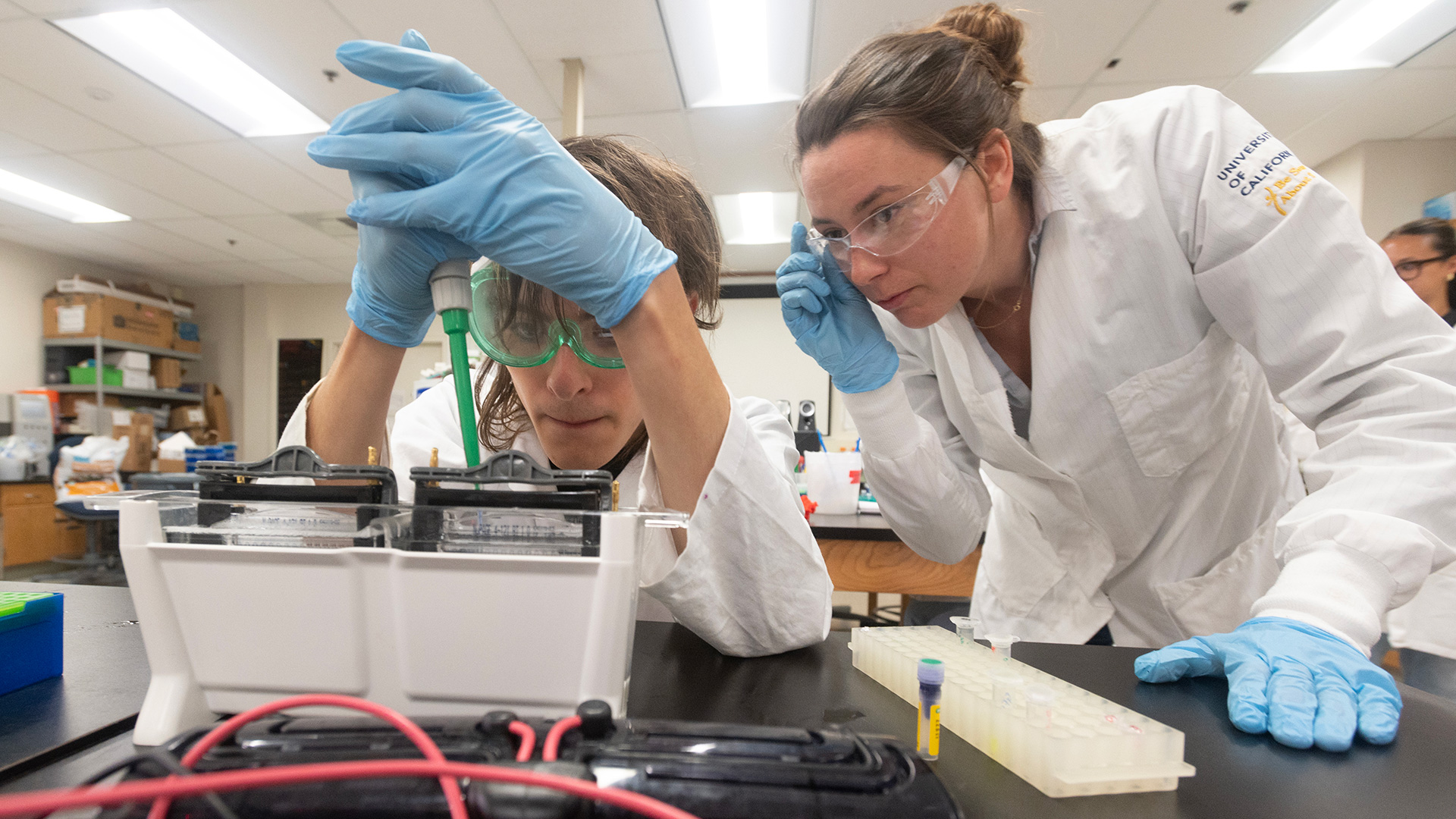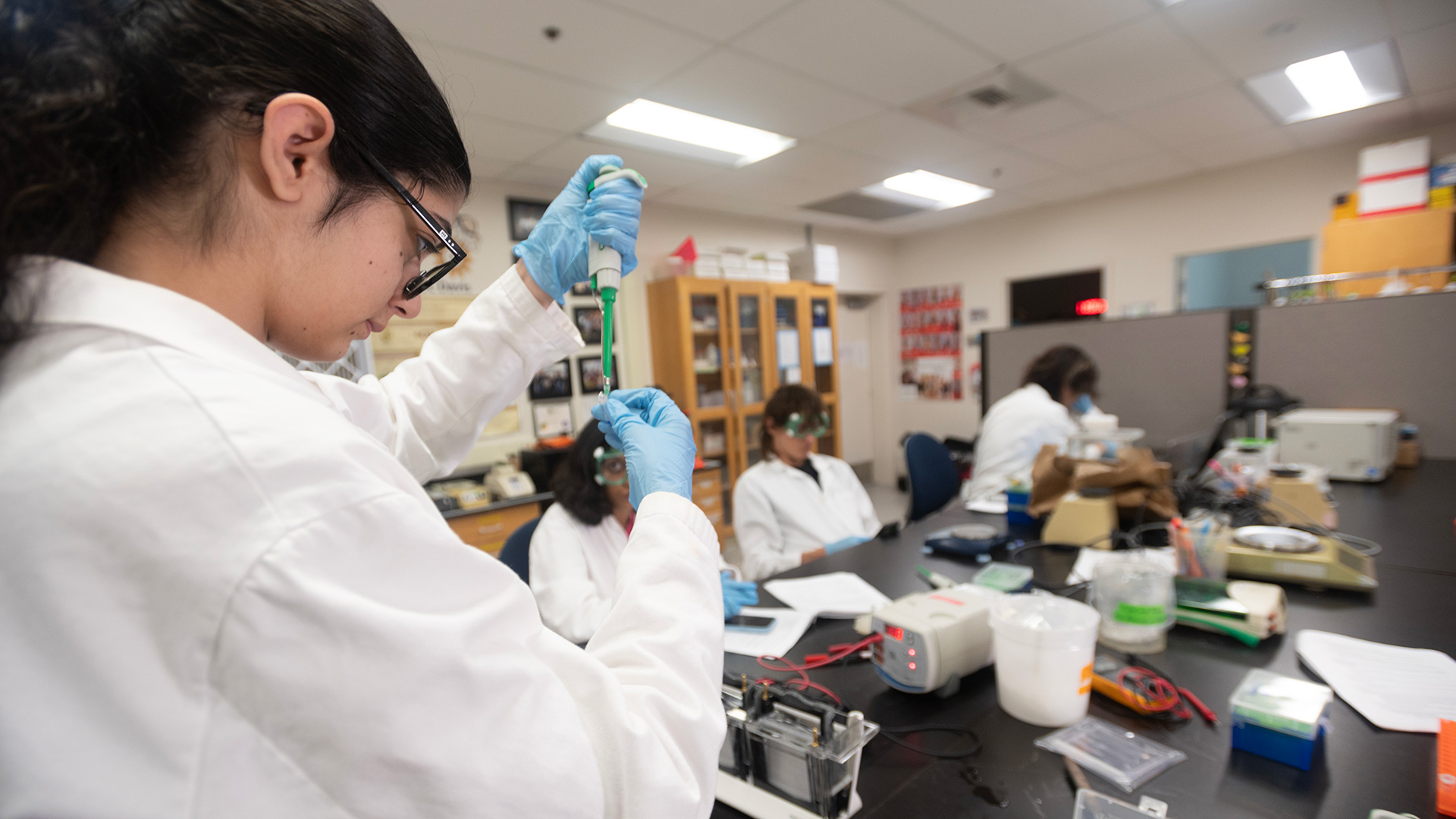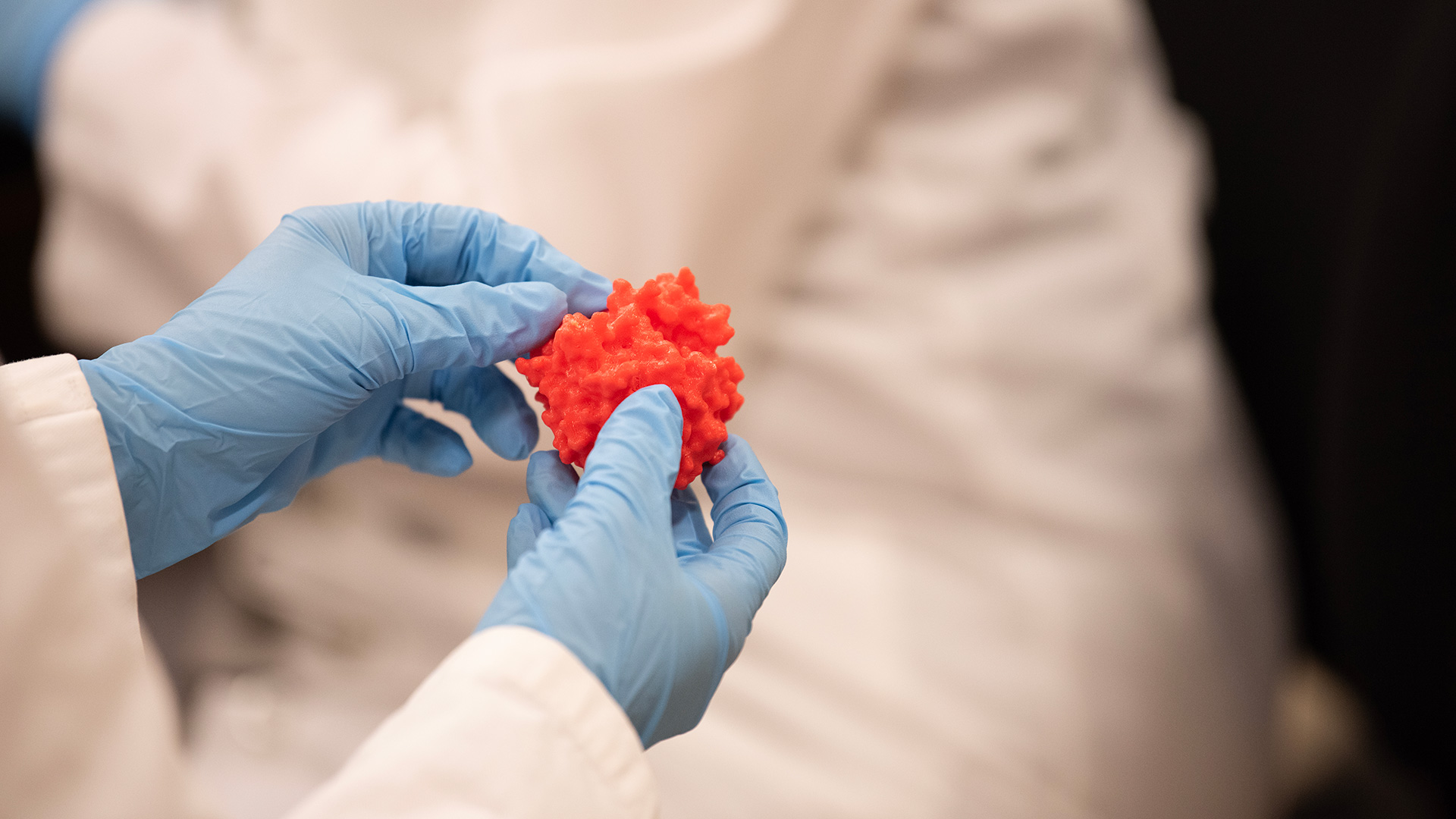Even with the world in our smartphone-ready hands, some skills can only be learned in person.
Design2Data, or D2D, provides undergraduate students with early laboratory experiences learning about enzymes and related protein structures with findings that contribute to a national network of data. The project is an extension of chemistry professor Justin Siegel’s lab at the UC Davis Genome Center.
The program revolves around an enzyme design-build-test workflow, where students are instructed through and then independently conduct a series of field-standard experiments. The program has been incubated as a Course-based Undergraduate Research Experience, or CURE, in the first-year seminar program, and is part of a collection of classes to encourage new undergraduates to explore laboratory experiences.
Many students who complete this seminar course go on to pursue a more immersive experience in the Siegel Lab. The Siegel Lab serves an average of 30 independent undergraduate researchers at any given time. These students start working in the lab on the D2D project and then matriculate into graduate-mentored enzyme engineering research projects in the lab.
Enzyme engineering is a major sector of the bioeconomy impacting the future of human health. “Enzymes are such a key component of every single biological process that occurs in the body,” said Shreyasi Das, D2D undergraduate student researcher and student lab assistant.
One example of an enzyme’s power? Lactose intolerance. It occurs when the body doesn't have the enzyme to break down lactose.
“Because enzymes are such a key part of our physiology,” Das explained, “it's important to have as much information as we [can] about them.”
Through lab experiments, D2D students learn how to generate quantitative data by contributing to a nationally crowdsourced database used to help build protein modeling algorithms. Such data and modeling is key for predictive algorithm training and helps accelerate the effectiveness of computational protein design solutions for today's biggest problems.
“We're the headquarters of a national network that includes 40 institutions,” said Ashley Vater, program director in the Siegel Lab, noting plans to expand the network to 200 institutions and reach tens of thousands of students. “At that point, we're really hitting meaningful numbers in a way that's both ambitious and sustainable.”

Why lab skills are important
For many students, working in a molecular biology laboratory setting means learning a new set of tools and skills. One of many rites of passage every D2D student experiences is learning to pipette — transferring liquid in a thin tube of the same name — an essential part of every experiment in the workflow.
D2D was the first hands-on lab experience for Claire Huntington, a fourth-year biotechnology major with an emphasis on microbiology. Her first year and a half at UC Davis was spent online because of COVID, but she joined the lab her second year, an experience she described as “a great immersive program for undergrads.”
Huntington, and other students participating in D2D study of the beta-glucosidase B, an enzyme that hydrolyses or breaks sugar bonds. She looks at the functional outcomes of the glucosidase mutations she designed using computational models, with the aim of generating data that may be useful to other research and applications.
“When we model this enzyme, you can look at the it in 3D on your screen,” she said. “Each student in the program uses their own intuition to explore the protein for a mutant of interest by looking at how that tweak in the structure will then affect its function.”
Upon graduation, Huntington will begin a full-time position as a staff research associate in a UC San Diego molecular biology laboratory. She plans to work for a few years before beginning graduate school.
“I would not have been able to do [the job] without all these experiences,” she said. “It gave me a skillset; I have a list of things that I now know how to do.”

Mastering wet lab skills
Isabel Siapno, a fourth-year neurobiology, physiology and behavior major and D2D undergraduate student researcher and student lab assistant, found D2D through the first-year seminar course.
“I really wanted to gain wet lab skills, such as learning how to pipette and doing assays and gels,” she said.
In addition to serving as a D2D lab assistant, Siapno works as an emergency medical technician and medical scribe. D2D has motivated her to pursue medical school and become a physician's assistant.
“Students would come to me and ask, ‘why is this experiment not working?’ I can individually help and that's what led me to health care,” Siapno detailed. “Talking one-on-one with the student or with a patient – hearing their story, how they went through the experiment, trying to problem solve with them and see how they can be successful in the future.”

Overcoming fear of failure in research
Shreyasi Das said she knew she wanted to pursue a career in the biological sciences when she was in high school from a combination of her AP classes and a “rudimentary understanding” about proteins through conversations with her mother. Das, is a third-year neurobiology, physiology and behavior major, and like Huntington and Siapno serves as a lab assistant, supporting new students learning the ropes in the lab.
A key part of doing science are the experimental failures students frequently encounter. “A lot of mentoring for this project comes down to the process of elimination,” Das described. “I help walk them through knocking the causes of the failure off the list.”
Das is also pre-med and aspires to become a neurosurgeon.
“Research teaches you a lot about perseverance, and medicine is a long journey,” Das said, noting that D2D impacts how she’ll approach future challenges in med school. “I know that I can eventually get through them; I just have to keep going.”

Importance of a robust protein database
Vater highlighted how this program's research could impact food, health and energy sectors.
“Large, high-resolution datasets are critical infrastructure for the future of protein design,” she said. “Better protein design capacities will be a game changer for tackling current human needs.”
D2D participants emphasized the power of knowing their efforts contributed to a crowdsourced pool of data, doing meaningful work early in their careers, and joining a community of scientists through the program.
“The D2D program is a great way for students to get hands-on research experience while collaborating on a larger dataset that could be really important,” Huntington said.
She said her first weeks in the lab were like moving to a new world where she was unable to understand the language.
“After being in the lab for three years,” Huntington said, “I speak the language and feel part of that community.”
